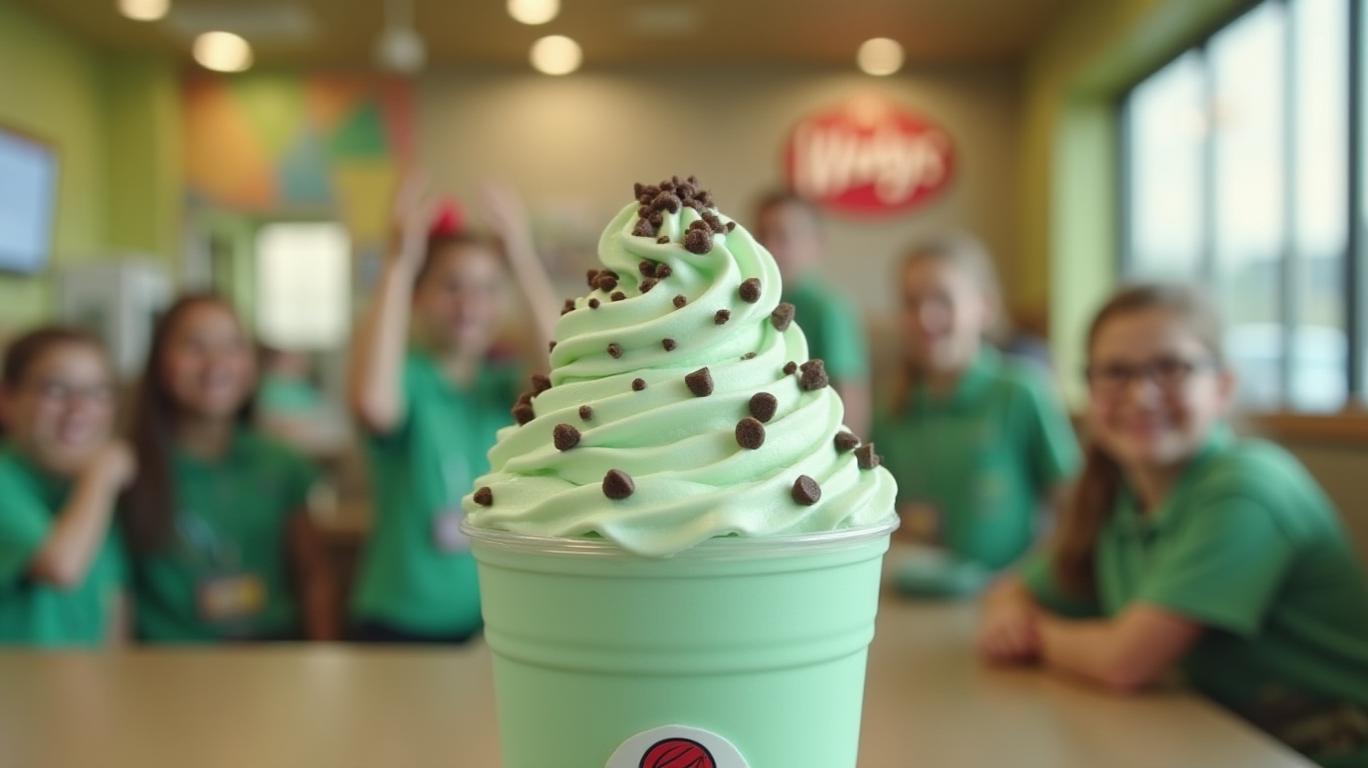Wendy's Q1 2025 Earnings: Navigating Challenges with Global Ambition
Wendy’s Q1 2025 earnings report reveals a company balancing short-term headwinds in its core U.S. market with strategic bets on global expansion, menu innovation, and operational upgrades. While the quarter delivered mixed results—falling short of revenue expectations while meeting EPS forecasts—the fast-food giant underscored its long-term resilience through disciplined execution of its “Fresh, Famous Food” and “Globally Great, Locally Even Better” strategies.
Financial Performance: A U.S. Stumble, but International Momentum
Wendy’s reported Q1 revenue of $523.5 million, a $6.2 million shortfall versus analyst estimates, driven by a 2.8% decline in U.S. same-restaurant sales. Adverse winter weather, weaker consumer demand in March, and ongoing macroeconomic pressures weighed on traffic and check sizes. Meanwhile, global systemwide sales dipped 1.1%, with U.S. weakness offset by a 2.3% rise in international same-restaurant sales.

Internationally, Wendy’s achieved 8.9% systemwide sales growth, fueled by record openings in Canada (highest in 25 years), milestones in Asia Pacific/Middle East/Africa (APMEA), and strong momentum in Mexico and Australia. This geographic diversification underscores the company’s ability to capitalize on regions with less saturated quick-service markets.
Adjusted EBITDA fell to $124.5 million, pressured by lower revenue and rising G&A expenses. U.S. company-operated restaurant margins dipped to 14.8% due to sales deleveraging and inflation, while free cash flow improved $12 million year-over-year to $68 million, reflecting cost discipline.
Strategic Initiatives: Betting on Innovation and Tech
Wendy’s is leaning into three pillars to drive long-term growth:
1. Menu Innovation: The Thin Mint Frosty collaboration with the Girl Scouts and the Frosty Swirls (with flavors like Oreo Brownie Batter) have injected buzz. Summer campaigns include the Takis spicy chicken sandwich and Fuego fries, targeting Gen Z, while a “100 Days of Summer” campaign combines value deals, gamified app features, and seasonal items.
2. Operational Excellence:
- Scaling FreshAI order-taking systems to over 500 U.S. restaurants by year-end, improving order accuracy and labor efficiency.
- Deploying digital menu boards and item label printers to reduce errors and enhance customer experience.
- The app’s digital sales mix hit 20% of total sales, with app conversion rates at an all-time high.
3. Global Expansion:
- 74 new restaurants opened in Q1, with 60% in international markets. Notable progress includes Mexico’s 25-restaurant deal in Guadalajara, Chile’s commitment to 30 new units over five years, and the 500th APMEA location.
- A 2%–3% net unit growth target for 2025, supported by $100–$110 million in capex for tech and new stores.
Risks and Challenges
- U.S. Consumer Sentiment: The 2.8% U.S. same-store sales decline reflects broader economic uncertainty, with March demand weakening across income tiers. Wendy’s will need to sustain momentum from summer campaigns to stabilize traffic.
- Margin Pressures: Commodity inflation and wage growth remain risks, though labor productivity improvements and domestic sourcing (e.g., Canadian beef) are mitigating costs.
- Stock Performance: The 1.52% pre-market drop to $12.49, near its 52-week low, signals investor skepticism about U.S. recovery prospects.
Outlook and Valuation
Wendy’s reaffirmed its 2025 guidance:
- Global systemwide sales: Flat to down 2% (vs. prior expectations).
- Adjusted EBITDA: $530–$545 million.
- Adjusted EPS: $0.92–$0.98.
- Free cash flow: $185–$205 million, with $325 million allocated to dividends and buybacks.
Despite the U.S. slump, the stock’s price-to-earnings ratio of ~13x (vs. industry averages of ~20x) suggests the market is pricing in near-term risks. However, the 8.9% international sales growth and disciplined capital allocation provide a foundation for recovery.
Conclusion: A Mixed Bag with Long-Term Potential
Wendy’s Q1 results highlight a company navigating U.S. challenges while capitalizing on global opportunities. The 2.3% international same-store sales growth, $124.5 million in adjusted EBITDA, and $68 million in free cash flow demonstrate operational resilience. Strategic bets—such as AI-driven order systems, menu collaborations, and franchisee-led expansion—position Wendy’s to rebound in 2025 if consumer sentiment stabilizes.
Investors should weigh the stock’s valuation (near 52-week lows) against execution risks. The 500+ FreshAI rollouts and $325 million in shareholder returns signal confidence in long-term value creation. While the U.S. recovery remains critical, Wendy’s global footprint and innovation pipeline suggest it’s well-positioned to capitalize on post-pandemic trends in emerging markets and tech-enabled customer experiences.
In sum, Wendy’s Q1 serves as a reminder that while near-term hurdles exist, its strategic investments and geographic diversification offer a path to sustained growth—if it can reignite U.S. demand and maintain its international momentum.

Comments
No comments yet